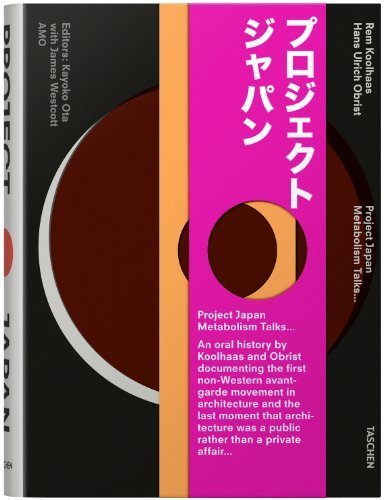Details
Binding description
brossura
Description
Having wandered the ruins of Hiroshima, Tokyo and other Japanese cities after WW II, The Metabolists - four architects, a critic, an industrial designer and a graphic designer - showed with the launch of their manifesto Metabolism 1960 how they would employ biological systems (aided by Japan?s massive advances in technology) as inspiration for buildings and cities that could change and adapt to the vicissitudes of modern life. Units could be added or removed from buildings like Kisho Kurokawa's Capsule Tower in Tokyo as required; buildings themselves could be added or removed from cities at will in the cell-like master-plans of Fumihiko Maki. Project Japan features a series of vivid, empathetic conversations, replete with surprising connections and occasional clashes between Koolhaas and Obrist and their subjects. The story that unfolds is illuminated, contradicted and validated by commentaries from a broad range their forebearers, associates, critics, and progeny, including Toyo Ito and Charles Jencks. Interspersed with the interviews and commentary are hundreds of never-before-seen images: master-plans from Manchuria to Tokyo, intimate snapshots of the Metabolists at work and play, architectural models, magazine excerpts and astonishing sci-fi urban visions. Presented in a clear chronology from the tabula rasa of a colonized Manchuria in the 1930s; a devastated Japan after the war; to the establishment of Metabolism at the 1960 World Design Conference; to the rise of Kisho Kurokawa as the first celebrity architect; to the apotheosis of the movement at Expo ?70 in Osaka. Koolhaas and Obrist unearth a history that casts new light on the key issues that both enervate and motivate architecture today: celebrity and seriousness, sustainability and monumentality, globalization, government participation (and abdication), and the necessity for architecture to reach beyond its traditional boundaries in order to embrace the future. Extensive interviews with Arata Isozaki, Toshiko Kato, Kiyonori Kikutake, Noboru Kawazoe, Fumihiko Maki, Kisho Kurokawa, Kenji Ekuan, Atsushi Shimokobe, and Takako and Noritaka Tange — Testi: Obrist Hans Ulrich, Koolhaas Rem. pagg. 684; COL; rileg. brossura. Editore: Taschen, Köln, 2011.

Find out how to use
Find out how to use
